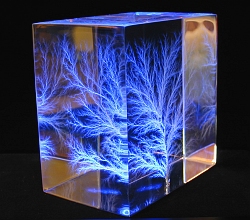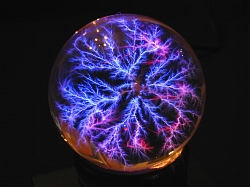Stonebridge engineering has found a way to capture lightning within 3D polymers. The’re fractals and they look awesome!




Technical description about how our Lichtenberg Figure Sculptures (or beam trees) are created.

Stonebridge engineering has found a way to capture lightning within 3D polymers. The’re fractals and they look awesome!




Technical description about how our Lichtenberg Figure Sculptures (or beam trees) are created.
Prof Lajeunesse interviewed 20 heterosexual male university students who consumed pornography, and found on average, they first watched pornography when they were 10 years old.
Around 90 per cent of consumption was on the internet, while 10 per cent of material came from video stores.
Single men watched pornography for an average of 40 minutes, three times a week, while those in relationships watched it 1.7 times a week for around 20 minutes.
The study found that men watched pornography that matched their own image of sexuality, and quickly discarded material they found offensive or distasteful.
Prof Lajeunesse said pornography did not have a negative effect on men’s sexuality.
“Not one subject had a pathological sexuality,” he said. “In fact, all of their sexual practices were quite conventional.
“Pornography hasn’t changed their perception of women or their relationship, which they all want to be as harmonious and fulfilling as possible,” he added.
via All men watch porn, scientists find – Telegraph.
If you have a cellphone, it turns out that Sprint keeps 24 months of your location data and turns it over to law enforcement regularly. 8 million requests were made over the last year. Requests can be made every 3 minutes for up to 60 days.
Sprint isn’t the only one who tracks this data: Yahoo and Verizon are also culprits but they’re not disclosing the amount of times they’ve given away this kind of data to the government.
Yup, they know where you are and where you’ve been. It’s a brave new world indeed!
Sprint Makes Goverment Tracking of GPS Data Easy – PC World.
Using electromagnetic pulses, researchers have found a way to impact steel at around 3500 bar allowing holes to be cut in hard steel in 200ms, around 7 times faster than a laser can.
Electromagnetic fields as cutting tools.